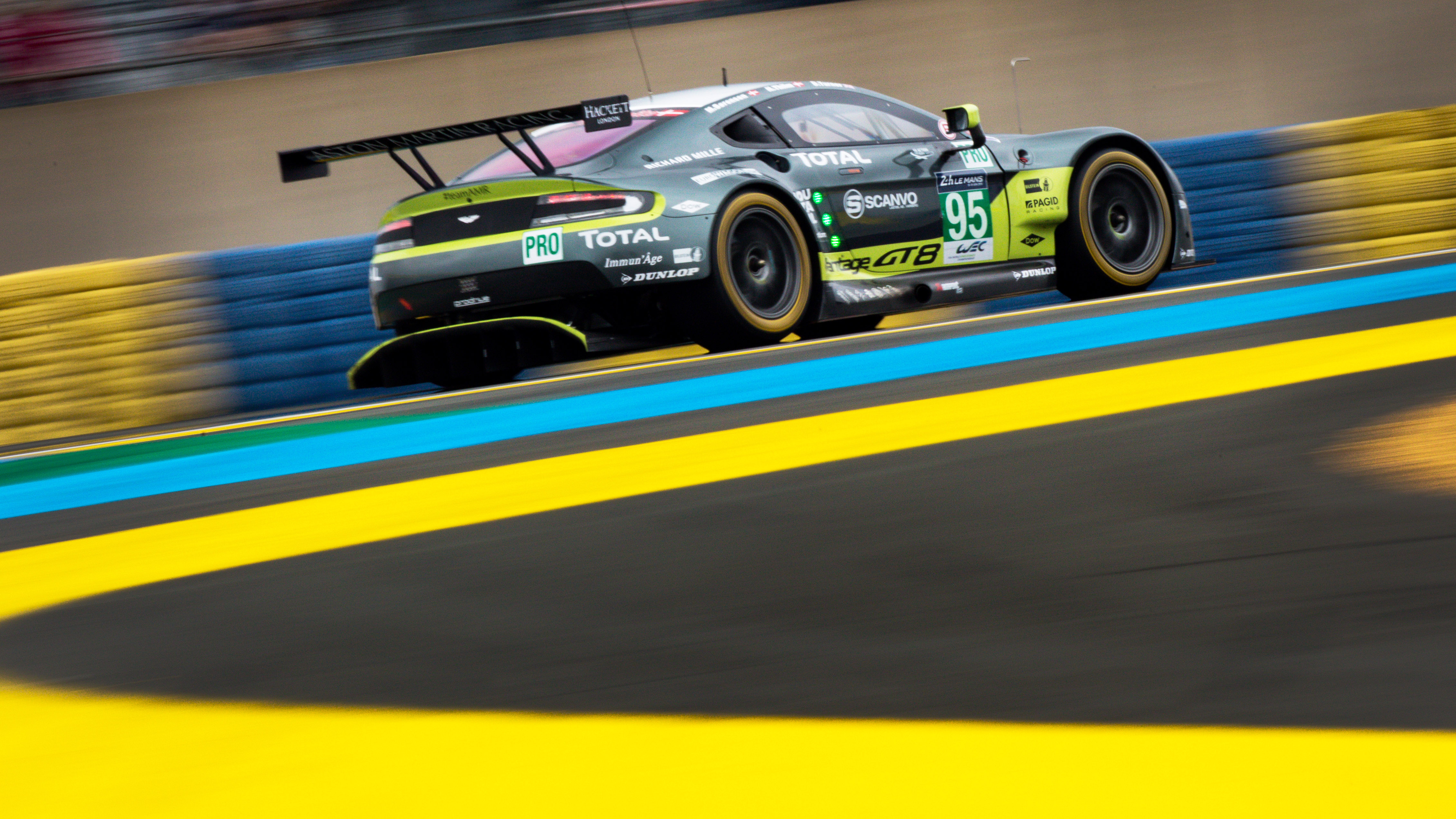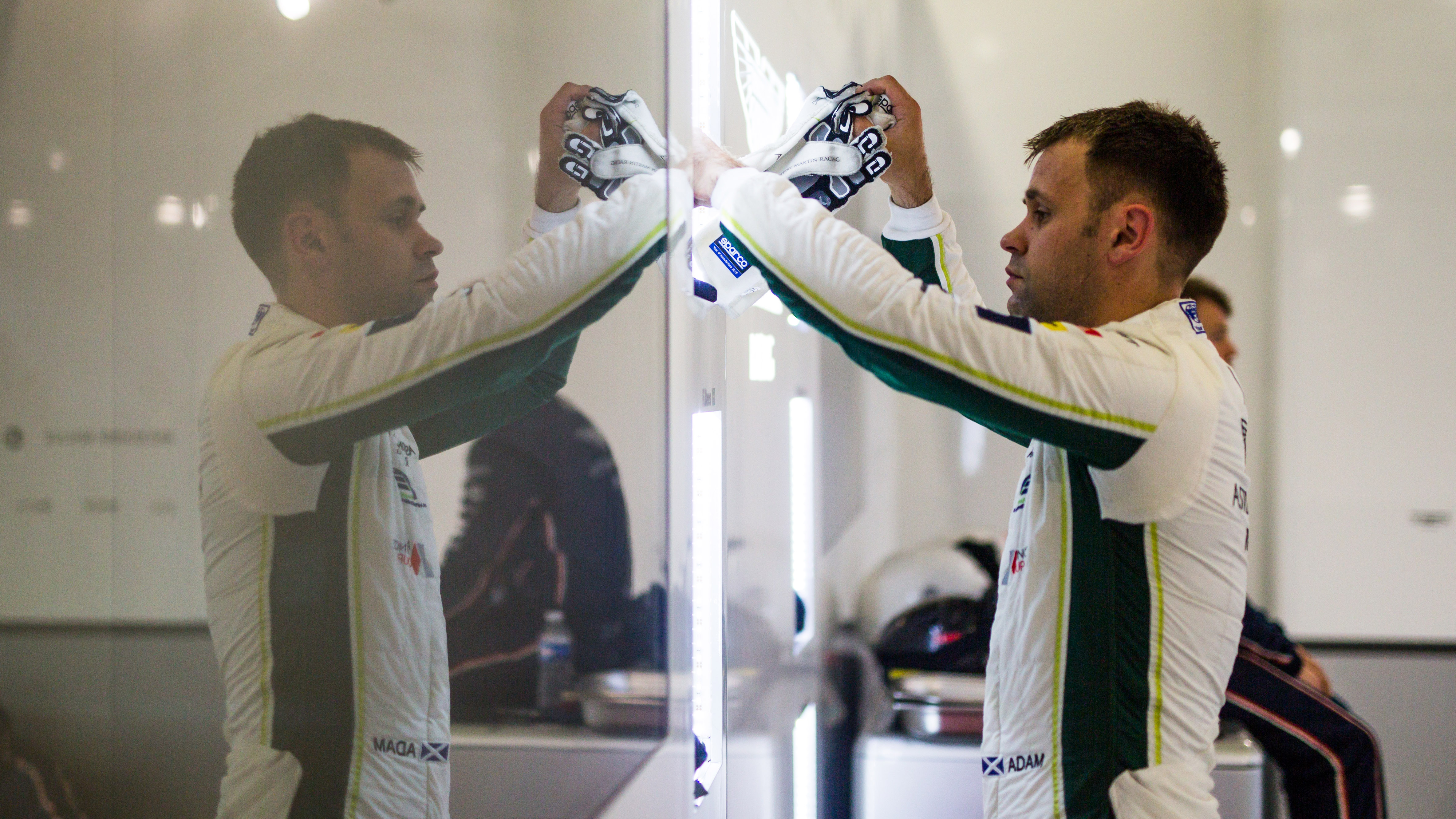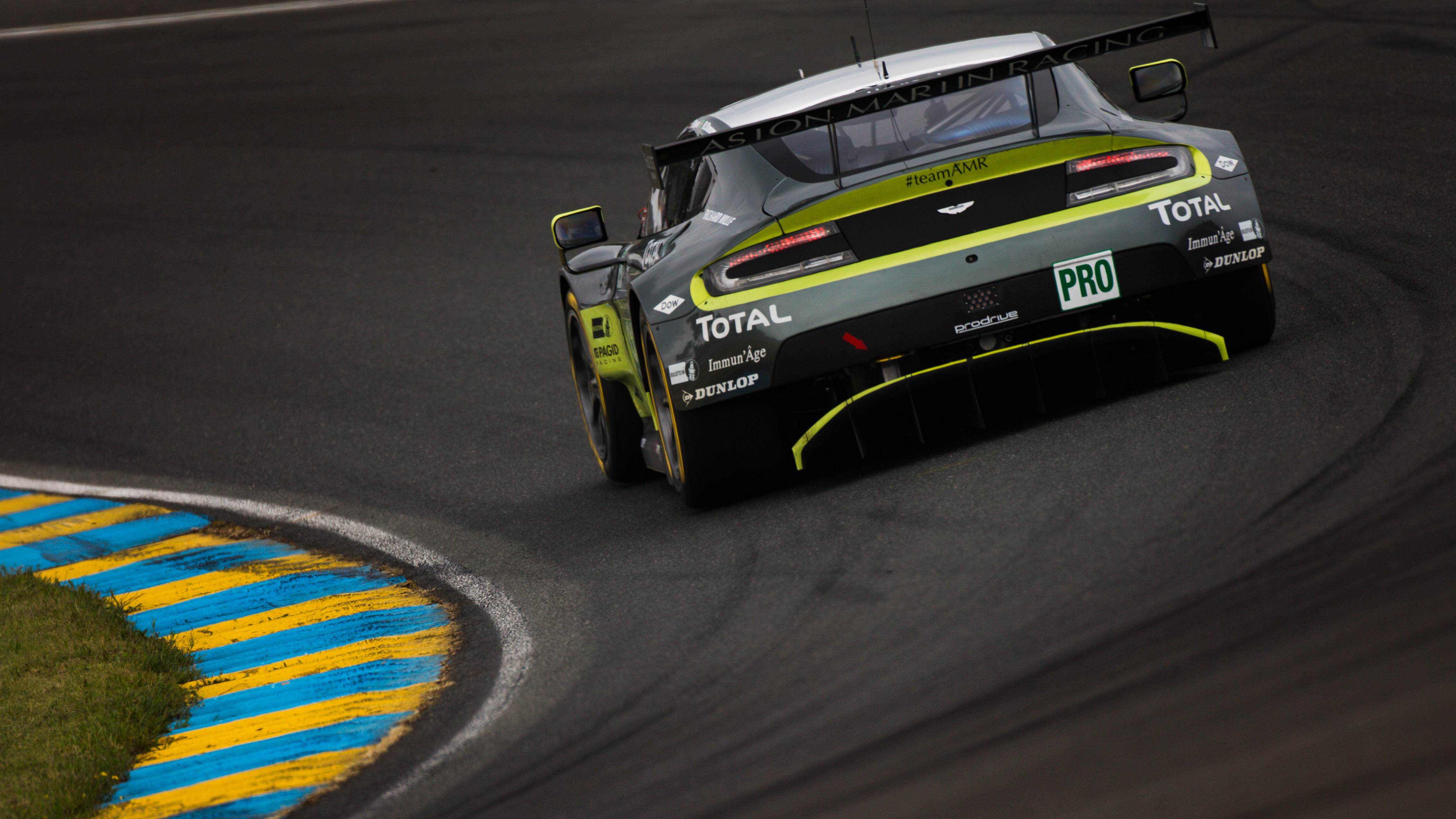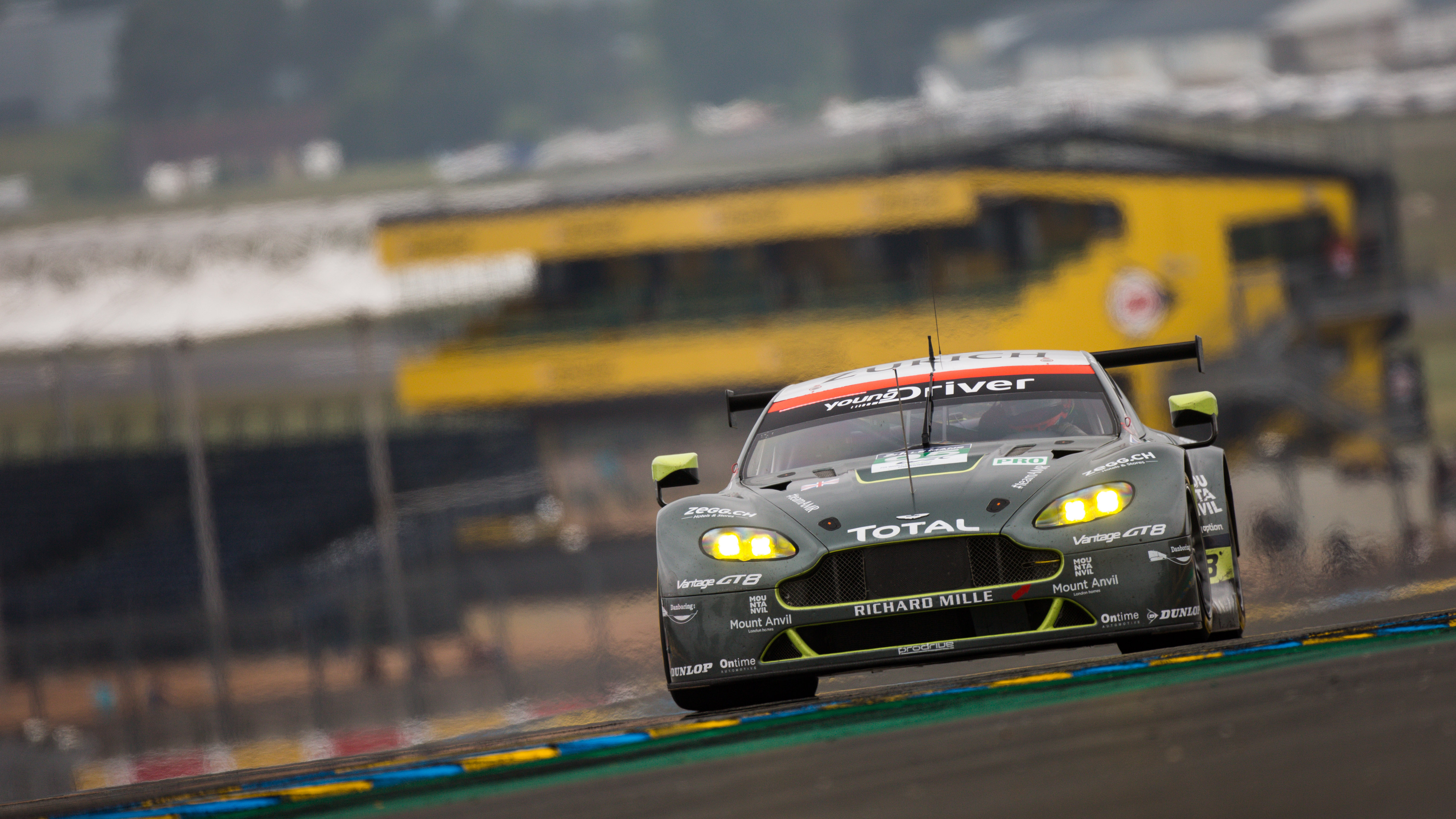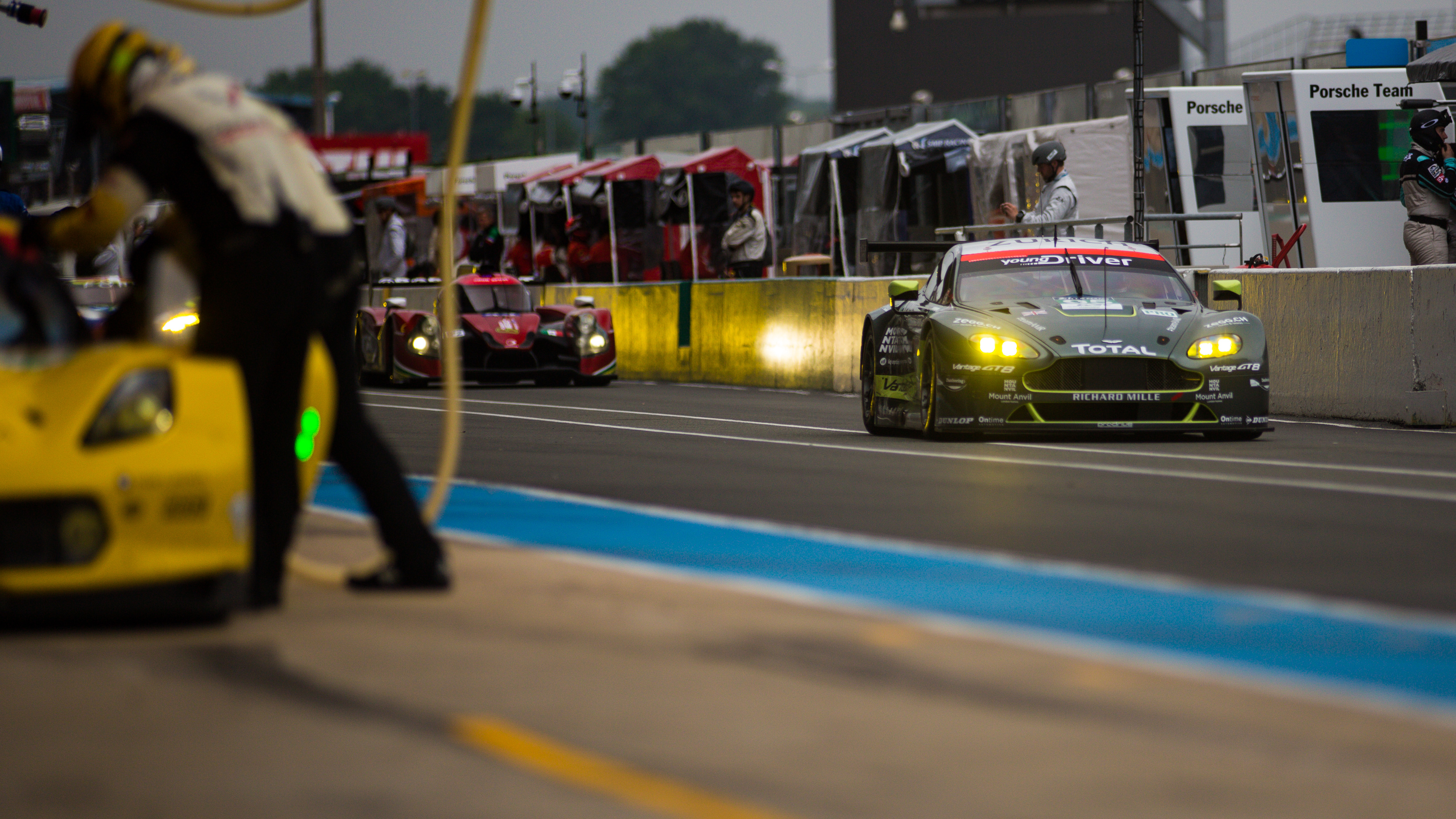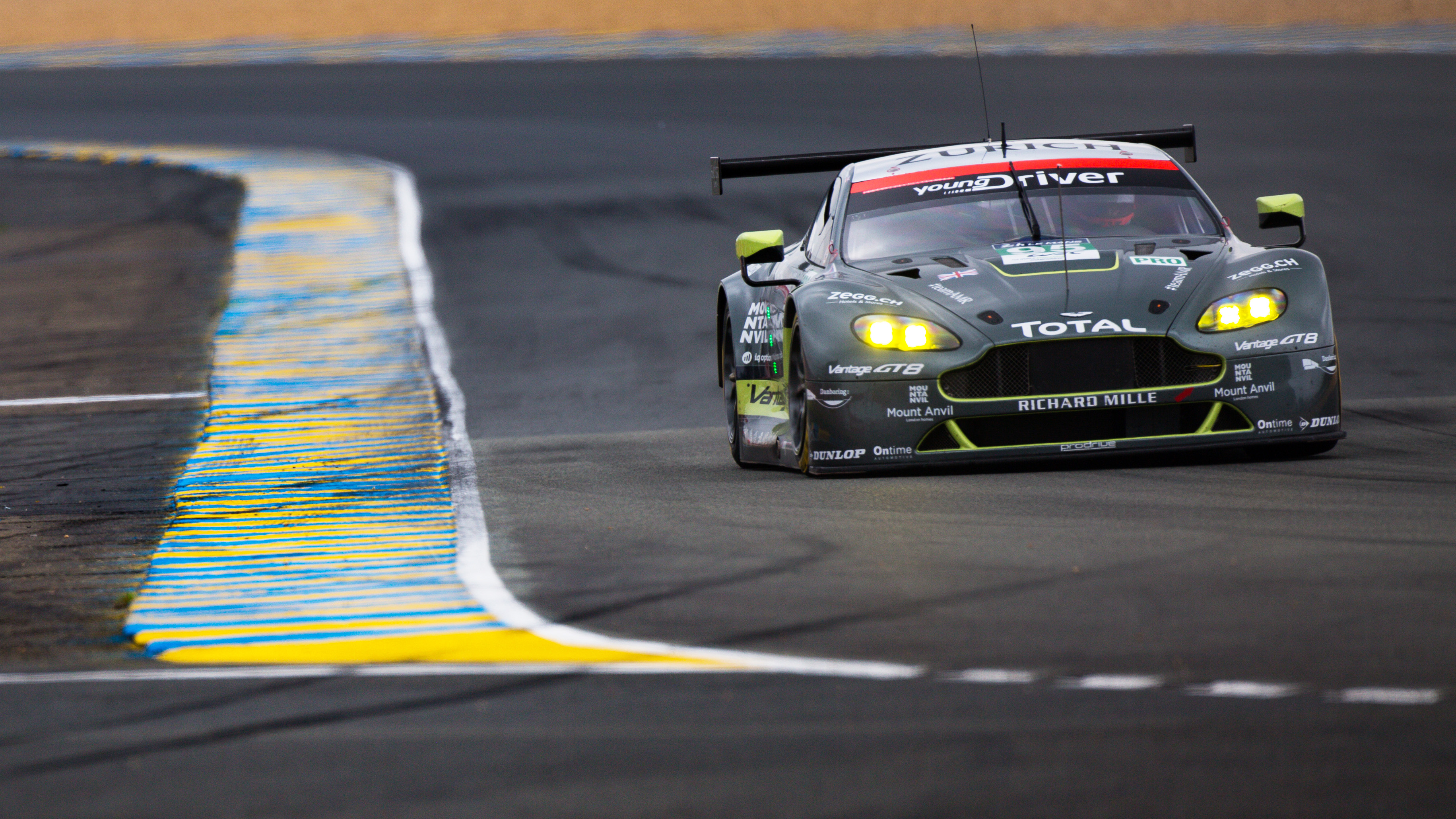
Sandbagging, snoozing and peeing: what really happens at Le Mans?
AMR’s Darren Turner and Jonny Adam reveal the ins and outs of 24-hour racing
The life of a racing driver is full of glamour, right? Wrong.
Adoring fans, plush motorhomes and fast cars might make it look like the perfect job. But what other occupation forces you to put in a 24-hour shift on little or no sleep, in a uniform you may need to relieve yourself in? Suddenly the daily office grind doesn’t sound so bad, does it?
It will all have been in a day’s work for Aston Martin Racing’s Darren Turner and Jonny Adam come 3pm on Sunday. Turner – a veteran of over a dozen races at La Sarthe – and Adam – a newbie for 2016 – face the daunting prospect of a full day of racing in the GTE Pro class: the most competitive category of the lot.
At the first shakedown earlier in the month, the 14 cars that make up that particular field posted quickest times where fastest and slowest were split by less than two seconds. On a lap that lasts nearly four minutes. Pretty close, then.
Over 24 hours, with things like reliability and strategy to consider, virtually anyone could win.
That is, of course, assuming that everyone was pushing to the limit. Rumours of ‘sandbagging’ persist every year, but according to Turner the practice makes no sense.
“We don’t really have the luxury of that,” he explains. “In reality we’ve got so much stuff to get through, the only way you can understand if your numbers are correct is by going as fast as you possibly can.
“Brake wear, fuel economy... all this stuff that is the homework you have to do prior to the race. Because if you do it holding back, your numbers aren’t correct, and then you’ll come into issues come the actual race itself. It’s not just us, everyone will be giving what they can, I’m sure.”
Not necessarily. According to Ford GT driver Harry Tincknell, “No one really shows their hand on the test day,” for fear of giving vital information away to rivals. And tellingly, Ford's #68 car went five and a half seconds faster than it did during testing to claim provisional class pole in the first qualifying session on Wednesday.
Still, that's two drivers with two completely different opinions. That clears that up then.
Top Gear
Newsletter
Thank you for subscribing to our newsletter. Look out for your regular round-up of news, reviews and offers in your inbox.
Get all the latest news, reviews and exclusives, direct to your inbox.
While they might not agree on the issue of sandbagging, the atmosphere between the 180 drivers in the paddock remains friendly in the week leading up to the race itself.
Turner calls it a “sociable place”, and it’s easy to see why. Jonny Adam warmed up with some karting action in the pit lane earlier this week, while Darren Turner revisited a risqué photoshoot from racing days gone by thanks to a daring autograph hunter yesterday afternoon. Crikey.
With so much going on, it’s no wonder some drivers complain of tiredness even before the green flag has dropped to get proceedings underway. “It’s a tough 24-hour race,” says Adam, who can at least rely on experience gained at Daytona and Spa when he ventures out for his first lap in anger at La Sarthe this weekend. “There’s no endurance about it, there’s a big element of sprint all the way through.”
With gruelling stints of up to four hours, drivers’ energy supplies can drain quickly, even among those at peak physical fitness. It means that a good recovery outside the car is essential in preparation for the next changeover. Just like a solid strategy and slick pit-stops, good sleep can be the difference between winning and losing.
So when it comes to getting forty winks, there are no half measures. Stationed just five minutes’ walk from the garages, the motorhomes are kitted out with proper beds and all the creature comforts a driver could ask for when needing to drift off in a hurry.
“The first year you do it you don’t really get much sleep because you’re just watching what’s going on, and it’s very hard to switch off,” says Turner. “Nowadays I could probably get four, maybe five hours sleep.”
That’s if the race goes to plan. Just imagine being woken up in the early hours of the morning to be told that you’ve got to abandon your comfy duvet to drive a 200mph GT car on a track full of much faster prototypes...
Concentration is vital: if you lose focus and crash out before the chequered flag, then speed and reliability count for nothing.
As well as dodging traffic, there are other distractions that can put a driver off their game. Oddly the smell of trackside barbecues is one, especially down the straights when there’s less for a driver to think about. Another is urine.
“Pretty much all of us had to pee during a stint,” says Turner, remembering Le Mans in 2005. “It sounds revolting but all you’re peeing is water, because you’re drinking so much and sweating so much.
“The hardest thing was actually relaxing enough to get going,” he continues. “It took a couple of laps when I was absolutely desperate. It’s like when you go scuba diving and you do it in your wetsuit. It just takes a bit of time.
“I did ask someone beforehand ‘If I need to take a pee during the race, what do I do?’ And he goes ‘Well, just relax and it’ll be alright. But you will laugh at the point when you hit the brakes.’
“It’s because it determines what way you ‘hang’, because it filled up my left boot. It was quite a funny experience.”
With fluid intake now limited to 250ml per hour, ‘organic seat heating’ is less of an issue these days.
But if you come across a set of racing overalls at your next charity auction, here’s a tip: make sure they’ve been dry-cleaned before placing a bid...
Trending this week
- Car Review
BMW 1 Series
- Top Gear's Top 9
Nine dreadful bits of 'homeware' made by carmakers




